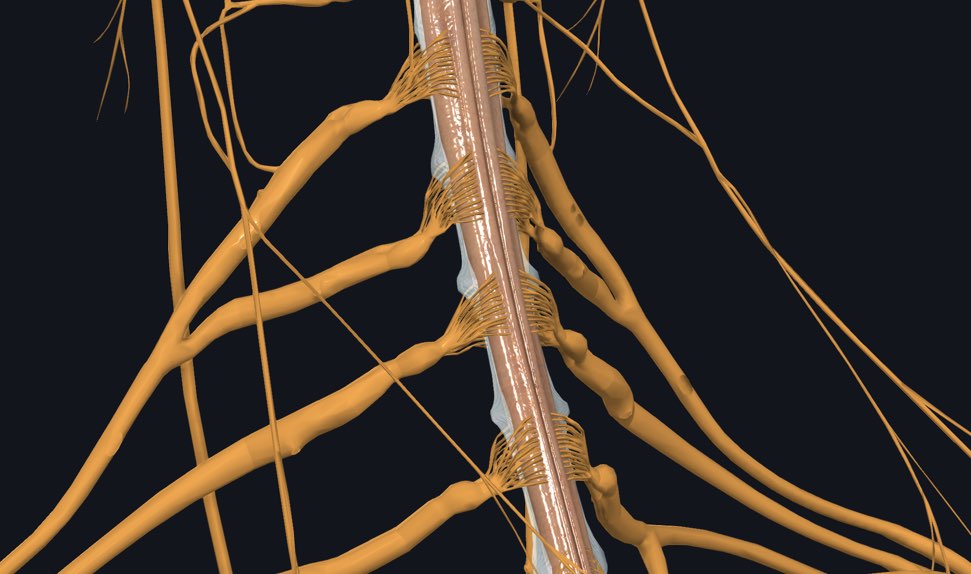
In one of our previous snippets we looked at how nerve messages travel from the brain. Now let’s talk about the main highway of the central nervous system: the spinal cord ?️
While the brain processes information, the spinal cord serves as a messenger channel between the brain and the rest of the body. Its motor and sensory nerve fibres allow signals to be passed from the brain to the body, and vice versa. ?
This thin, cylindrical structure plays a role in voluntary and involuntary movement. It also contains sympathetic and parasympathetic pathways, controlling the body’s response to danger and maintaining homeostasis.
The anatomy of the spinal cord means that different segmental levels of the cord control neuronal activities for that specific area, as well as acting as a conduit for all levels below that area. So, any injury to the cord will affect the sensory, motor and reflex functions of the body parts supplied by nerves at this level, as well as any areas below the site of injury.
Hence the higher up the injury, the more significant damage and loss of function. Remember the motorway analogy, if the road is closed at a certain level, cars can still access any exits before the closure but not the exit at the road closure or any exits thereafter. ?️
Though it is well protected, the spinal cord is still susceptible to injury, and due to its specialised cells, is unable to repair itself when damaged. ?
However, there is hope for those afflicted with spinal injuries. ⛅
Emergent technologies such as visual reality neurotherapy encourage the brain to stimulate neurological pathways that may have been ‘turned off’ due to injury.
Other developments within the medtech sphere, such as Brain-computer interfaces (BCI), are advancing, which will allow for damaged nerve cells to be bypassed and voluntary muscle movement to be restored.
And there may even someday be potential for the regeneration of neuronal growth and connections through the use of stem cells. Watch this space… ?⚕️
Examine the nervous system is incredible depth with the world’s most advanced gross 3D anatomy atlas, in addition to intricately detailed microanatomy models such as the peripheral nerve and olfactory bulb. Try it for FREE today.